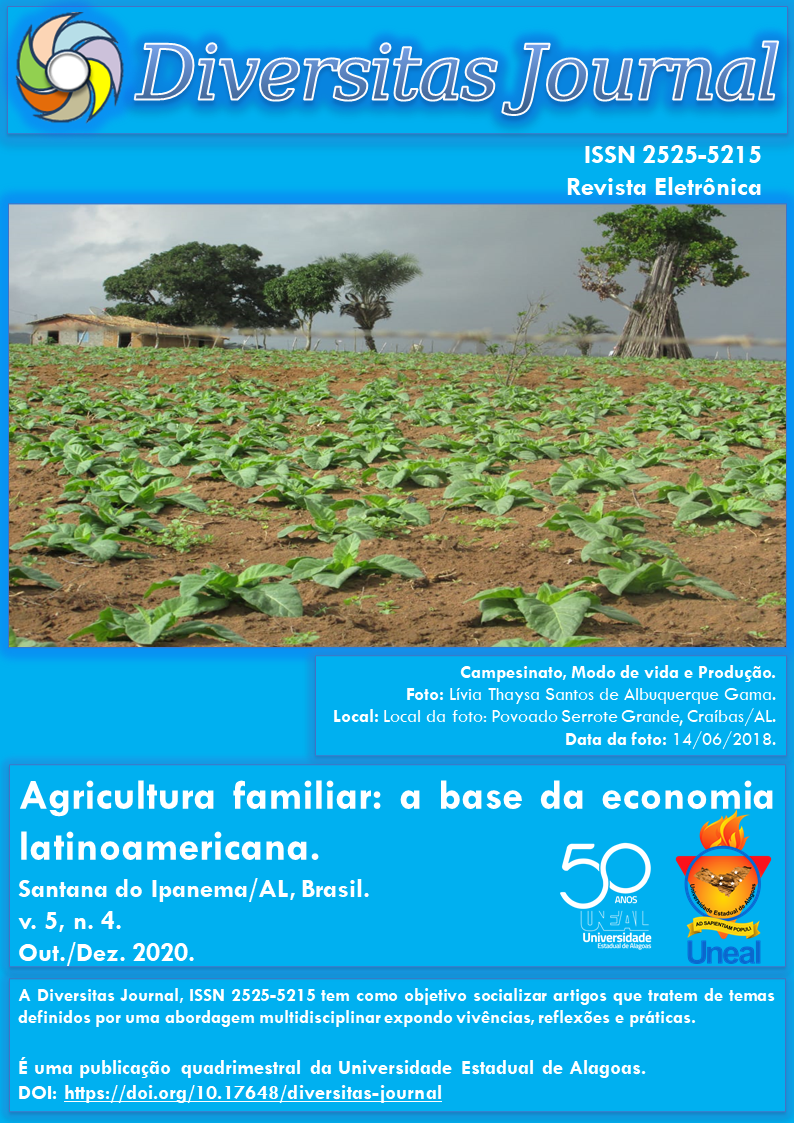Aspectos comparativos entre milho (Zea mays L.) e sorgo (Sorghum bicolor L. Moench): diferenças e semelhanças
DOI:
https://doi.org/10.17648/diversitas-journal-v5i4-891Abstract
ABSTRACT: Maize and sorghum constitute two of the main crops used by Brazilian agribusiness. These are plants belonging to the Poaceae family, with applications in animal and human food, syrup production and other usual uses. Despite having many similarities, they also have distinctions. These distinctions, can determine which of the grasses can be more advantageous to cultivate. In this context, the main objective of this literature review is to expose individual and shared characteristics between maize and sorghum, aiming to demonstrate to the urban and rural population, the knowledge about the two crops and their possibilities. The theoretical framework was based on the databases of Google Scholar, Scielo, Embrapa Milho e Sorgo, and Capes, where from the content, topics were formulated on silage and animal feed, production and economic importance, maize and sorghum by-products, human nutrition, and cultivation of corn and sorghum, in which the appropriate climate, soil, irrigation and fertilization were addressed. Through this bibliographic review, the potential to be explored with such cultures became clear, emphasizing the importance of aggregating dispersed information in order to know the characteristics that surround these cultures, since it was observed that the way in which the grains are cultivated and the place, can determine the level of productivity and assist in the selection of which grass to cultivate, considering the interest of the producer to have an improvement of the crops and a lower risk of frustration after planting.
KEYWORDS: Review, cultivation, grasses.
Metrics
Downloads
Published
How to Cite
Issue
Section
License
Copyright (c) 2020 Willian Lopes Souza, Luana Gomes da Silva, Luiz Eduardo Bezerra Silva, Rafael Lima Vieira da Silva, Luan Lucas Cardoso Lima, Dacio Rocha Brito

This work is licensed under a Creative Commons Attribution 4.0 International License.
The Diversitas Journal expresses that the articles are the sole responsibility of the Authors, who are familiar with Brazilian and international legislation.
Articles are peer-reviewed and care should be taken to warn of the possible incidence of plagiarism. However, plagiarism is an indisputable action by the authors.
The violation of copyright is a crime, provided for in article 184 of the Brazilian Penal Code: “Art. 184 Violating copyright and related rights: Penalty - detention, from 3 (three) months to 1 (one) year, or fine. § 1 If the violation consists of total or partial reproduction, for the purpose of direct or indirect profit, by any means or process, of intellectual work, interpretation, performance or phonogram, without the express authorization of the author, the performer, the producer , as the case may be, or whoever represents them: Penalty - imprisonment, from 2 (two) to 4 (four) years, and a fine. ”


















